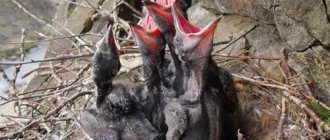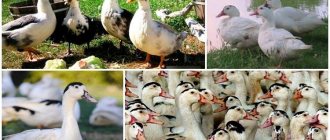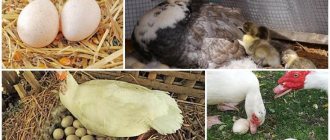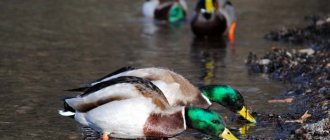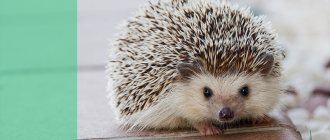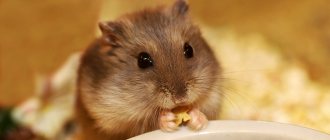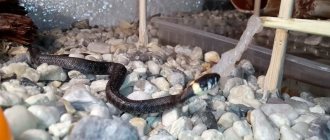Having found a small chick on the street, most people immediately wonder: is it possible to feed a sparrow chick at home? After all, the main food for adults is the seeds of plants that the chicks cannot yet consume due to their age. When kept at home, their main diet should be invertebrates or special feed mixtures, which will need to be prepared with your own hands. From this article you will learn how to feed a sparrow chick found on the street, what kind of care the bird needs, and why you should not pick it up again.
Basic data
The sparrow has been a constant companion of man since ancient times. Despite the fact that sparrows previously lived only in Africa, they later settled in almost all countries, even settling in Siberia and the tundra. Thanks to settlers, this sparrow was even brought to America in 1850 and has firmly established itself there since that time.
The sparrow belongs to the order Passeriformes, which includes about five thousand different birds. The average weight of an adult bird is about 30 grams.
The sparrow got its name from its habit of flying to farmers' fields. People, driving them away, shouted: “Beat the thief!”, later transforming this cry into the name of the bird.
The importance of the intermediate stage
When caring for a sparrow, do not miss the moment of stopping feeding and transferring the chick to self-feeding. Remember that the baby’s desire for independence does not indicate that it is necessary to reduce feeding.
In the natural environment, parents feed the chicks even when the babies learn to fly and get food. Don't miss this important moment. Make the sparrow chase you to get the food you want.
You can tell if a chick is ready for independence by looking at its weight. The norm is 20-27 g. The sparrow is completely covered with feathers, the tail is long, the beak loses its yellowness. Mature birds bite painfully.
As the sparrow chick grows up, the frequency of feeding is gradually reduced. Some birds switch to self-feeding quickly, while for others the process is delayed; this is not scary. If your baby refuses to eat, don't worry. This is a normal process until their weight drops below 21g.
A sparrow chick fell out of the nest - what to do?
If you find a chick on the street, you should first find out what class of birds it belongs to. In addition, even if you are sure that it is a sparrow, it would be a good idea to ask your veterinarian how to hatch a sparrow chick in an apartment. Before you take him into your home, make sure that his life is in immediate danger, because young birds quite often die in captivity. If you are sure that there is no immediate threat to its life, it is better to leave the chick where you saw it.
If the chick you find is already fully fledged, it means that it is a fledgling that is just learning to fly. If there are no feathers, it means that he is not supposed to be on the ground yet, so it would be best to inspect the surrounding bushes and put the baby in the nest.
Knowing how to feed a small sparrow chick, in a short time you can, with a certain amount of effort, raise a healthy, beautiful bird from a fragile baby that will delight you with its cheerful chirping.
How to feed chicks correctly
If you find a nest full of small and yellow-throated babies, and you are absolutely sure that their parents will not come again, and you really want to help the poor orphans, you can try to feed these chicks. If you wish, feeding such birds is a completely solvable task; you just need to first learn more about such babies so as not to inadvertently harm them.
Feeding instructions
First of all, you will definitely need:
- pipette;
- tweezers;
- disposable syringes;
- birdseed.
Now you can start feeding. To do this you need to do:
- food for chicks can be liquid or solid. At the pet store you can purchase special food for birds that they can eat. It can be prepared in the form of porridge, as written in the instructions, and fed to babies;
- draw the resulting mixture into a syringe and prepare a pipette with water;
- if the babies are in the nest, you need to rock it a little, after which they will think that it is their mother who has arrived and will open their beaks wide, and all you have to do is pour them a little food. Make sure that the porridge from the syringe gets into the throat and not under the tongue. After this procedure, give each chick a few drops of water from a pipette;
- small birds that can eat insects can be fed using tweezers;
- if for some reason the cub does not open its beak, try to help it. Take the chick in your hand and hold it firmly but gently. Then, with your other hand, open his beak and insert the index finger of the hand with which you are holding the baby into it. Now insert food into his throat using tweezers, and then immediately give him some water to trigger the swallowing reflex;
- It should be taken into account that when feeding the chick is not lying on its back, because it may choke. There is no need to give a lot of food at one time. Once you feel that the baby’s beak is sufficiently full and he has swallowed food, this will be enough for one feeding;
- if you try and act correctly, the chick will grow up and over time will be able to eat any type of food itself.
Habitat
With the exception of some varieties, sparrows lead a sedentary lifestyle. An example is the white-headed sparrow, which goes to warm countries for the winter. If you find a fledgling sparrow on the street, be sure to consider the difficulties you will encounter. You need to know not only how to hatch a sparrow chick, but also how to adapt it to adult life in its natural environment.
When kept at home, sparrows rarely live to be five years old, and when living in natural conditions, most young birds die during their first wintering, as a result of which the average life expectancy of sparrows is 1-2 years.
When taking home a fragile baby, keep in mind that the more often you touch him, the greater your influence on him will be, therefore, over time, he will perceive you as a parent and will completely cease to be afraid of people, which in natural conditions can significantly complicate his life. Take the chick in your arms only if you firmly decide to keep it.
Gastroliths and function
But not only ostriches swallow stones; for example, grouse also do this. Gastroliths are stones that help digest tough plant foods. Birds find them and swallow them along with food. But in some birds these solid particles sink lower into the stomach, into the muscular part, and remain there. That is why birds kept at home are recommended to put sand and small pebbles in their cage. Gastroliths function as teeth, which are absent in modern birds.
Nesting Features
In most cases, sparrows nest in pairs, trying not to create colonies. They settle in close proximity to human habitation. Most often, nests are made in the cracks of buildings, among branches, in the nests of large birds that do not notice small sparrows, and in tree hollows. In addition, they can occupy the nests of other birds, such as swallows.
In the southern regions, they often build nests openly, placing them in bushes, on steep ravines, and in close proximity to grain fields.
The nest, in the construction of which both parents participate, is a sloppy structure of dry grass and feathers. Birds try to make a small depression in the middle part.
In late autumn, the stronger chicks, together with the adults, renew the nest with new branches, due to which it provides adequate protection from wind and snow during the cold season.
Character and lifestyle of a sparrow
These sedentary birds prefer to nest in one place. Their offspring remain with their parents after growing up, so these birds form very large flocks. A pair of birds find one for life.
For their nests, sparrows choose a variety of places where they can be placed. The nest of this bird can be seen on the eaves of a balcony, birdhouse, in empty wooden and brick buildings, among pipes and even heaps of garbage.
The character of these birds is distinguished by its nastiness. They fiercely and jealously guard their possessions. They boldly fight for their territory and survive birds that are even larger in size. In addition, they show their temper not only towards strangers. They can bully their relatives with or without reason.
Silence and silence are absolutely not characteristic of these birds. The slightest movement near them causes a very violent reaction, which is accompanied by noisy sounds.
In spring, when pairs form between birds, it becomes especially noisy and “hot”. Males fight for primacy among themselves not only on trees and rooftops, but also high in the sky.
There are no bloody consequences after this. The rivals scatter in different directions, but some time passes and they fight again.
Reproduction
Sparrows are monogamous by nature. When looking for a mate, they remain faithful to their partner for at least the entire season, and sometimes throughout their entire lives. The female lays her first clutch at the end of April. There are from five to seven eggs in a clutch, the incubation of which lasts up to two weeks. Both parents participate in the feeding process, catching a large number of different insects during the day. Chicks, with good nutrition and climatic conditions, are able to fly out of the nest within a few weeks after birth.
How much does a crow chick eat?
Thus, the diet of crow and crow chicks under three days of age should consist of approximately 60% of various types of meat, 20% of various insects, and the remaining 20% of cottage cheese and quail eggs.
Interesting materials:
What to do with daffodils after flowering? What to do with daffodils after forcing? What to do with the inheritance? What to do with dissatisfied customers? What to do with unnecessary books? What to do with Unpaid Leave upon dismissal? What to do with Unpaid Vacation? What to do with a new mattress? What to do with very salted caviar? What to do with peeled potatoes?
Appearance
Sparrows are small birds with a strong build and a moderately long, strong beak. The wings are short and wide. There is a small notch at the end of the small tail. The color of the upper feathers is brown-brown, and the belly is light. In addition, individuals have well-developed sexual dimorphism, thanks to which it is quite easy to distinguish a male from a female.
The male has a fairly large dark spot on his chin, which smoothly extends to the rest of the body. The female, unlike the male, has a dark brown head, while the male’s is gray. In addition, the male looks much more colorful than the female, and his plumage is much brighter.
Along the back, painted brown, there are many longitudinal stripes. Similar stripes can be seen near the eyes. The area above the tail is gray-brown. The feathers on the wings have a light orange border, and the coverts are white. The color of the beak and legs is dark.
What is avian goiter?
Many people associate the word “goiter” with a disease, but a bird’s goiter is a special organ that serves as a reservoir for food. It is an expanded part of the esophagus, dividing it into two parts - upper and lower. A bird's goiter is a protrusion of the stomach that is clearly visible to the naked eye. It is lined with mucous membrane with glands that secrete secretions. This is why for some, the initial stage of digestion begins in this pouch-like expansion. In birds of the Pigeon and Pheasant families, striated muscles are attached to the crop, which, when contracted, help move food into the glandular stomach.
Based on its origin, goiter in birds can be divided into 2 groups:
- The wall of the esophagus bulges and a spindle-like reservoir is formed. For example, in hummingbirds and birds of prey.
- Short and limited at the top and bottom. For example, in parrots, chickens.
Now you have an idea of what a bird’s goiter is. Where is this organ located? In most birds it is located on the right side of the neck above the collarbone.
The goiter is clearly visible in fed chicks. When palpated, an empty, healthy crop is soft, and a full crop is hard.
Caring for fledgling chicks
If you decide to take your baby home, you must know how to feed a yellowthroated sparrow chick, because it has not yet learned to open its beak when food approaches it.
Keep in mind that you should feed such a baby, if possible, without touching him with your hands. Food should be presented with tweezers, carefully opening its beak. As the chick grows, it will begin to open it itself at the right moment, perfectly understanding the purpose of the tweezers.
The ideal food for newborn sparrows are ant eggs or small insects. If the chick is not yet fledged, mealworms will be a bit harsh on it, and earthworms may be infested with helminths.
Droopy goiter
This pathology occurs due to stretching of the goiter muscles. It looks like a bag hanging over the chest, and the muscle fibers lose their elasticity. After eating, this organ becomes very noticeable.
This disease can be chronic if the bird often has goiter inflammation or due to irregular feeding. Being very hungry, the bird eats a lot and fills its bag, the muscle fibers stretch and lose elasticity. Even complete immobility may develop. In a saggy crop, food remains longer than usual, so the fermentation process begins and the accompanying gas formation begins. All this can lead to damage to this organ and its rupture. Unfortunately, if a bird has this disease, it is irreversible and incurable.
To prevent this from happening to birds kept at home, they should always have food in their feeder. The bird will get used to it and will not “clog” its crop.
Most common types
In the CIS territories, 16 species of sparrows are most often found, which, due to their massive distribution almost throughout the world, are not protected by law, as a result of which there are no prohibitions on keeping them as pets. Along the sides of city paths, they readily eat the seeds of bird buckwheat and most other herbs.
Despite the undeniable benefits that they bring to humanity by eating a large number of insects, they are still partly pests, because when they fly to grain fields, they significantly reduce the harvest by pecking out ripening grains from the ears, which are digested in their bodies within 3-4 hours. During the ripening period of various fruits, sparrows peck at the ripest fruits, as a result of which they quickly wither and dry out.
When taking your baby to you, you must know how to feed a sparrow chick, because if you give it large caterpillars and mealyworms, due to its age, it simply will not be able to swallow them. Even adults in the wild do not eat them entirely. The caught caterpillar warms up until the sparrow manages to peck out its entrails.
Goiter inflammation
One of the dangerous diseases that occurs in birds is inflammation of the goiter. Due to the entry of pathogenic bacteria or fungi into the body, the normal functioning of the goiter glands is disrupted. They begin to produce large amounts of mucus. More often, this disease attacks pets that eat ready-made monotonous grain mixtures due to the lack of vitamin A in them. If the problem is not identified in time and treatment is not started, the infection spreads further, affecting the stomach and intestines. Birds may experience diarrhea. Signs of goiter inflammation are:
- gray mucus;
- frequent swallowing movements;
- regurgitation of food;
- temperature drop;
- lack of appetite;
- intestinal disorder.
Treatment is prescribed by a doctor and includes antibiotic therapy and the introduction of vitamin A into complementary foods.
Features of care
Knowing how to feed a sparrow chick at home, within a month of careful care you will grow it into a beautiful, strong bird.
When you bring your baby home, first of all, place him in a box and put a heating pad on him, which should first be wrapped in a towel. Whatever you do, transfer the bird as carefully as possible and maintain the temperature around the baby within 30 degrees. Watch the chick's growth carefully. A healthy individual should gain weight daily.
Additional feed
You can buy some of the above delicacies in stores that sell fishing supplies. It is possible to find or catch lunch yourself.
You can also dilute your diet with products that you can always find in your refrigerator. Steamed wheat porridge, the pulp of white bread soaked in milk, boiled chicken eggs, cottage cheese - all this can be given to birds in small quantities.
You should also treat your new friend to boiled chicken and veal. You can add carrots to lunch, from which you have previously squeezed the juice. Lettuce and leaves - this will also feed the sparrow chick. The winged one himself will tell you what else to feed. If his afterbirth is irregular and without the characteristic white color, then either the diet or the interval of meals is incorrect.
What you need to know when taking a chick home
Even if you know how to hatch a sparrow chick, you should not forget about your health, because chicks can be carriers of various infectious diseases. Always practice good hygiene when handling your pet. Thoroughly disinfect your hands and also clean the nest of its waste products.
You should not accustom the bird to touch; try to distance yourself from it if possible - this will help you feed the sparrow chick at home and easily release it into the wild in the future. Keep in mind that you must create the most comfortable, calm conditions for him. Severe fright in a bird can lead to irreversible consequences, including death.
Good comrade
As soon as your friend starts trying to fly, choose a small cage. You will be able to release him later. But it is worth noting that some animals, accustomed to everything ready-made, are not able to survive in the real world.
For those who do not intend to part with their new friend, there is good news: sparrows are trained. They understand perfectly well when a person wants to help them and when he is trying to harm them.
One Moscow zoologist working with these birds even taught his experimental subject to give his paw. He also noted that the bird is jealous of other animals and tries to completely capture his attention. She sits on shoulders and arms, and also sings great.
Owners should also know that this class is afraid of blue, so they should be careful with such shades.
A sparrow chick will be a good friend (photo). What to feed and how to care for it is entirely your business; the main thing is to be merciful and reasonable.
Complete diet
As soon as the baby gets into the apartment, a completely natural question arises: what to feed the sparrow chick? Once you have settled it in your home, purchase special food for chicks at the veterinary pharmacy. If the chick is still fledgling, the best food will be ant eggs and special mixtures of cottage cheese and grated carrots, which you need to prepare yourself.
Keep in mind that carrots must be present in the bird’s diet, since due to its high content of vitamins it can strengthen its still fragile immunity. As soon as the sparrow grows up, add as many insects to its food as possible.
If the chick has not yet begun to develop its own feathers, it must be fed at least once within an hour. Grown-up individuals can be fed once every few hours. Focus on your pet's behavior. As soon as he gets hungry, he will begin to squeak, opening his beak invitingly.
Big city problem
Modern people have little faith in such legends. Scientists are also breaking myths. Zoologists have found that the legs of this bird are very short, and it is this length that helps to maintain balance. In addition, all tiny winged birds move by jumping.
The researchers first added the prefix “pet” to their name. Indeed, now these birds live very close to human habitation. The birds' homeland was Northern Europe, but over centuries of evolution they settled throughout the globe.
Today it is increasingly difficult for them to survive in large cities. More often, parents think about what to feed the sparrow chick. There are few insects in large populated areas, so dad and mom add bread and seeds to the child’s diet, which they don’t really like.
What do sparrows eat? Sparrow behavior while eating
Some birds and animals are quite picky about what they eat. Often, such representatives of the fauna adapt very poorly to new food sources and new products. Sparrows are very far from similar animals; they know how and can perfectly adapt to the various conditions in which they find themselves. And this is clearly observed in their diet.
If a sparrow lives outside the city, then it can eat pet food, it can eat crumbs from a person’s table, it can find various gifts of nature on trees and bushes. A sparrow who lives in the city will also not suffer from malnutrition. Many people throw away half-eaten food, there are many open garbage cans around, after all, people walking in the park don’t mind feeding the birds and animals that are also there.
And in any case, you can find insects and other small creatures almost everywhere. Whether in the city or in the countryside, in the forest or near the river.
The sparrow can hardly be called a very modest or overly courteous bird, especially when it comes to the food it wants to eat. These birds hover around the set table with all their might, waiting for everyone to leave it so they can grab something tasty for themselves. There are often cases when sparrows themselves could fly up to the table and take the food they liked. They also often feed with poultry, eating grain and other food.
These small birds swear and fight for territory every day, but when it comes to feeding, their behavior changes dramatically. No quarrels and complete support - if one person has found enough food, then the first thing he does is call others and only then everyone starts eating together.
It is very interesting that when an unfamiliar food source is discovered, one sparrow must try it first, and when everyone understands its edibility, only then do they begin to eat.
In general, these birds never disdain and even more readily feed on what can be found in human lands. They are smart enough to use a food source that doesn't require a lot of effort. But few people can be very angry with these little birds, because they perform a rather important and useful role. Sparrows rid the territory of their residence of various pests and insects and, in general, monitor it and protect it from those unwanted guests whom they are able to expel.
Arrangement of the nest
When it comes to building a nest, both the male and female sparrows put in the effort. The place of residence and hatching of offspring is quite large compared to the size of the bird itself. Apparently, this is why construction is not delegated to one person, but is done jointly. The most common option is a fairly rough structure that contains small branches, straw, dry grass or leaves, feathers and similar materials. There is a small depression in the center of the nest. Actually, this is where adult sparrows will live during winter and bad weather, and little sparrows while they grow up and gain strength. These birds begin building a nest already in March.
The sparrow's nest quite rarely has a beautiful or clearly defined shape. And all because during construction they do not adhere to any rules. The main thing in their business is to end up with a cozy and protected place from the external environment. These birds devote much more effort to choosing the location of the future nest. If they find a corner, hollow or crevice, they are unlikely to build a home on an open branch. This behavior is probably due to the fact that sparrows themselves are small in size, and therefore they will have to put in an enormous amount of effort to build them carefully. In addition, this will take a significant amount of time, which the sparrow often does not have, since it is looking for a mate and building a nest in the fall.
It is not uncommon for this tiny bird to find and occupy the nests of other birds, set up birdhouses, and occupy old swallow nests. Even a regular pipe or recess will do.
As for building a nest from scratch, the place most often chosen is under the roof of large buildings and gazebos, in attics and simply in trees.
Sparrow distribution. What types are there?
Thanks to their excellent ability to adapt to almost any conditions, sparrows have found a place for themselves in all corners of our planet. They can be found both in the center of a noisy city, and in a quiet village, or even in a forest far from humans. These small birds have found a place for themselves throughout Western Europe and have moved far to the north almost to the Sea of Okhotsk. In addition, sparrows have long since settled in Asia, in its central part and in the east. And, incredibly surprisingly, these little ones live and explore new territories in Siberia. And this is only what concerns the Eurasian mainland.
Such large habitat halos contributed to the fact that sparrows began to gradually change and form an impressive diversity of species. At the moment, the following representatives of the Sparrows are known:
- house sparrow;
- field sparrow;
- snow sparrow (or snow finch);
- black-breasted sparrow;
- red sparrow;
- stone sparrow;
- Mongolian ground sparrow;
- short-fingered sparrow.
The most famous of all is still the common house sparrow. The name came, apparently, because of his love of living near a person, and his fame, most likely, too. After all, we encounter this type of sparrow almost every day. The spread of the house sparrow began from Northern Europe, after which it found a place in almost every corner of it. Then he and the man traveled to a new continent - America, this happened around the beginning of the twentieth century. And when connections between all continents were established, he found a place for himself in Africa, Australia, and the islands of New Zealand.
In almost all territories, the House Sparrow species, after finding a convenient place with sufficient food, never moves again and does not look for a more suitable environment. A flock of these birds loves their lands, protects them and protects them from unwanted guests. But this does not apply to those house sparrows that live in the far north: in Siberia and Scandinavia. Due to the fact that winters are harsh there, this forces the feathered creatures to move south until their permanent habitat becomes warmer again.
Sparrows are very interesting birds from which you can learn a lot. They are adaptable, protect and support members of their pack, and take good care of the territory in which they live. The house sparrow has found useful traits in living next to humans, and humans appreciate the sparrow's help in protecting them from pests and insects.
Keeping at home
Sparrow in a Cage
Sparrows are not considered domestic birds, so only a small percentage of the total population grows in cages. In most cases, if an individual lives in captivity, then the person picked it up as a chick.
Interesting fact : if a chick lies on the ground, covered with feathers and down, it should not be touched. This is how he learns to fly under the watchful supervision of his parents. If the chick is so small that it has not yet begun to grow, it means that it accidentally fell out of the nest and needs help.
House sparrows contain several individuals in spacious cages. Birds quickly get used to care and care. Rock sparrows are best suited for home cultivation. They are the least aggressive and quickly adapt to isolation.
